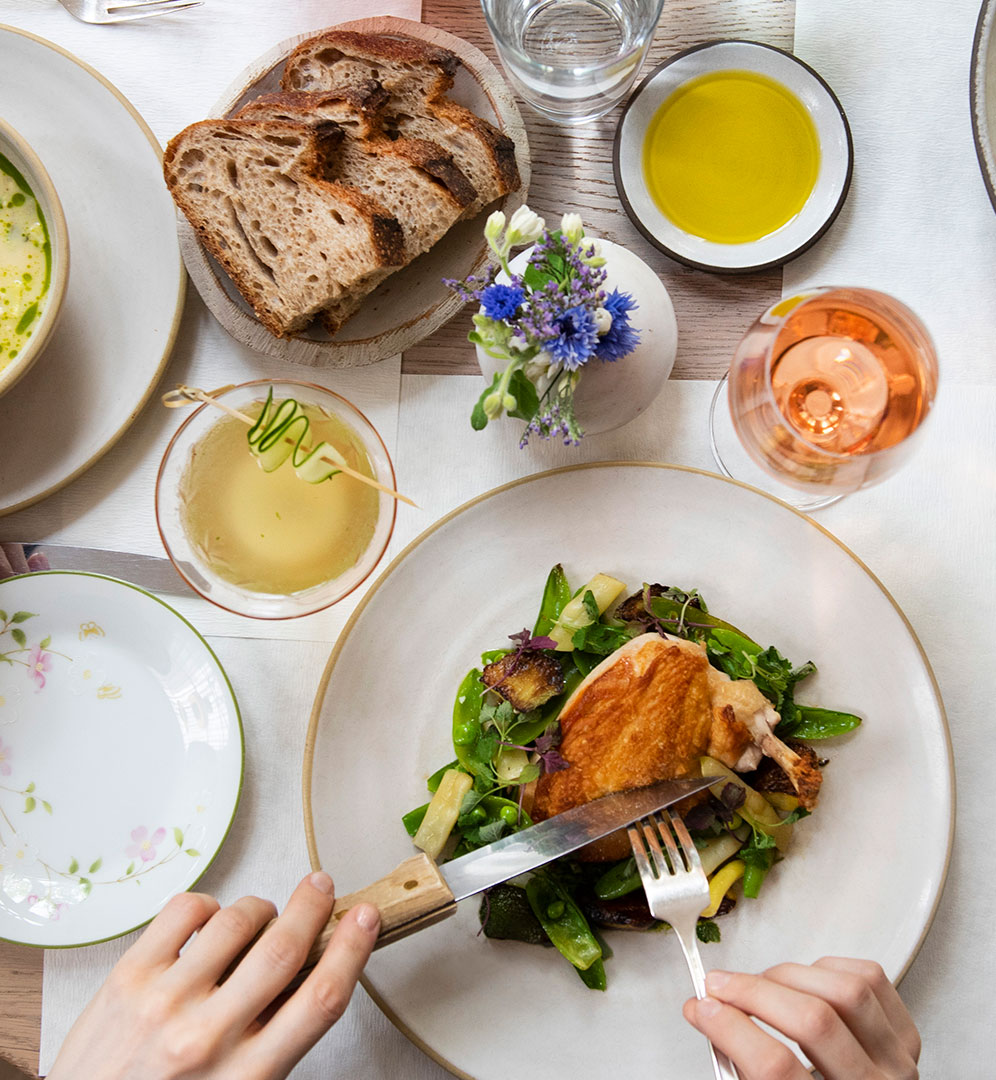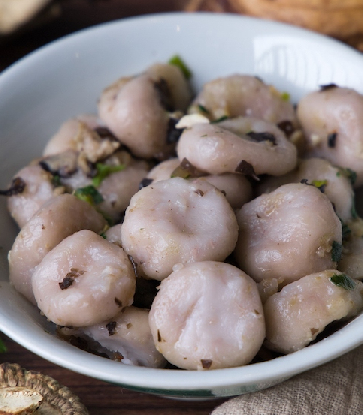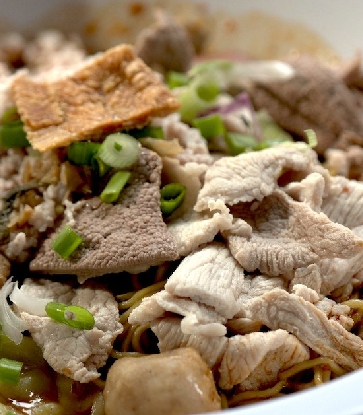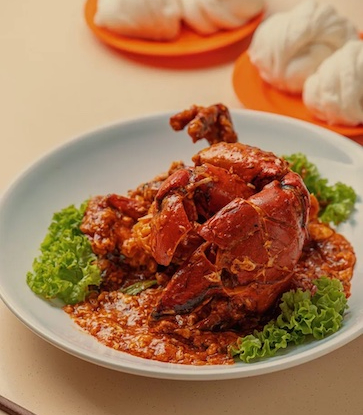Malaysia's rich and diverse cultural heritage has manifested itself in many ways through the variety of its cuisine — Malay, Chinese, Indian, Eurasian, and Nyonya (Straits Chinese) have been existing side-by-side for hundreds of years.
Malaysians love rice or "nasi". Rice is a staple for every Malaysian, to the extent that in most local dialects, rice means food. In Cantonese, parents would summon the family to the dinner table by saying, "shik fan!" (eat rice).
Ethnic origins and cross-cultural influences aside, whether Indonesian, Indian, Chinese, or Thai, the adaptation of each type of rice dish, imbued with the local flavours, makes it uniquely Malaysian. Eaten whatever time of the day and all year round, these rice dishes provide comfort and nourishment to every soul. Let's makan!

Nasi Lemak
One would be hard-pressed to visit Malaysia and not come across Nasi Lemak within a 5-kilometre radius. Nasi Lemak translates to "fat rice" in English, but what makes it an iconic dish is the indulgently rich and creamy coconut rice infused with pandan leaves, along with its accompanying condiments.
In the early days, street vendors would sell the humble Nasi Lemak packed in banana leaves as a breakfast staple for workers to get a head-start to their day. The dish typically comprises aromatic coconut rice, ikan bilis (fried anchovies), hard-boiled egg, cucumber, peanuts, and sambal (spicy chilli paste).
These days, Nasi Lemak is available all day at roadside food stalls, local restaurants, fast food chains, and even as an in-flight meal. The accompanying condiments have expanded to a dizzying array of options, including fried chicken, sambal sotong (spicy sambal squid), beef rendang (beef curry), chicken curry, and more. This beloved rice dish has also been adapted into an ice cream flavour, birthday cake, burgers, and even a dress worn by a Miss Universe contestant representing Malaysia in 2017.
Where to Get It: Anak Baba (Bib Gourmand, MICHELIN Guide Kuala Lumpur & Penang 2023), Rasa Rasa (Bib Gourmand, MICHELIN Guide Kuala Lumpur & Penang 2023), and Ali Nasi Lemak Daun Pisang (MICHELIN Selected, MICHELIN Guide Kuala Lumpur & Penang 2023)

Nasi Ulam
Authentic Nasi Ulam always brings to mind boisterous communal family gatherings where herbs and raw vegetables are chosen by the person preparing the dish, to mix with rice. A traditional Malay dish, Nasi Ulam has similarities to the Malay Nasi Kerabu (Kelantan Herb Rice) and is one of the best examples of Malay influence on Nyonya cuisine by the Peranakans.
The fragrant and aromatic nuance of the different herbs, mixed with fluffy warm rice, kerisik (dry-toasted shredded coconut), and flaked fish has become an integral part of Nyonya cuisine. Many Peranakan families prepare this dish mostly during special occasions due to the tedious and hard work of patiently slicing and chopping the various herbs. No two Nasi Ulam are alike, and every restaurant and household has its version of it. The essential commonly found herbs in Nasi Ulam are lemongrass, turmeric leaves, cashew leaves, torch ginger flowers, wild betel, kaffir lime leaves, basil leaves, and Vietnamese mint leaves.
Where to Get It: Auntie Gaik Lean's Old School Eatery (One MICHELIN Star, MICHELIN Guide Kuala Lumpur & Penang 2023), Moh Teng Pheow Nyonya Koay (Bib Gourmand, MICHELIN Guide Kuala Lumpur & Penang 2023), Bibik's Kitchen (MICHELIN Selected, MICHELIN Guide Kuala Lumpur & Penang 2023)

Nasi Ambeng
Nasi Ambeng is a traditional Javanese rice dish from Indonesia similar to Malaysia's Nasi Campur (mixed rice). Nasi Campur is perceived as a day-to-day individual economical rice dish. In contrast, Nasi Ambeng is a communal dish served on a large platter for at least four to six people to share and enjoy, often during celebrations or festivities.
The truth is, Malaysians don't need a reason to celebrate in order to enjoy communal meals such as this one. Every dish is a possible sensory experience that brings people together. Young and old, regardless of status, foster closer communal ties as everyone gathers to partake in this rice dish that is traditionally eaten by hand.
Nasi Ambeng is usually served on a big tray with banana leaves and side dishes surrounding a glorious centre of hot, steamed rice. There is no definitive range of side dishes, but the selection is locally adapted and based on the availability of ingredients. Examples include tempeh goreng (deep-fried tempeh), beef rendang, steamed vegetables, fried beancurd, telur masin (salted egg), and kerupuk (fried crackers).
Where to Get It: Congkak (Bukit Bintang) (Bib Gourmand, MICHELIN Guide Kuala Lumpur & Penang 2023)

Nasi Briyani
When Indian cuisine arrived at the Malay peninsula centuries ago, it was bound to be well-received, as there are similarities to the spices and flavours in local Malay curries. Migration from the southern states of Tamil Nadu and Kerala resulted in a distinct selection of spicier Indian dishes, with the Nasi Briyani being a crowd favourite among locals.
A classic briyani uses basmati rice, flavoured with aromatic spices like cloves, cumin seed, star anise, cardamom, and cinnamon. The highly scented rice dish, commonly served with a variety of meat protein and vegetable curries, soothes with its aromatic flavours and yoghurt servings.
Nasi Briyani is not an easy dish to master, and most chefs know that it takes patience, time, and attention during the cooking process for this dish to shine through consistently.
Where to Get It: Aliyaa (Bib Gourmand, MICHELIN Guide Kuala Lumpur & Penang 2023), Bite N Eat Dindigul Biriyani (MICHELIN Selected, MICHELIN Guide Kuala Lumpur & Penang 2023), and Jawi House (MICHELIN Selected, MICHELIN Guide Kuala Lumpur & Penang 2023)

Claypot Chicken Rice
Claypot Chicken Rice is a Cantonese dish commonly served in hawker stalls. Cooks will simultaneously prepare several orders at a go, with rows of charcoal stoves laid out. Unlike Nasi Ulam, which has endless ingredient variations, the ingredients for Claypot Chicken Rice are simple: chicken, Chinese sausages, rice, mushroom, and Chinese sauces. This rice dish originated in the Guangdong province in China, and Kampar, a small town in Perak, Malaysia, was the first to serve it around 70 years ago.
Where to Get It: Heun Kee Claypot Chicken Rice (Pudu) (Bib Gourmand, MICHELIN Guide Kuala Lumpur & Penang 2023)

Hainanese Chicken Rice
A measure of good Hainanese Chicken Rice is its silky-smooth, tender-poached chicken with translucent, gelatinous skin. This dish's only reference to Hainan is a type of chicken rice on the southern coast of the Chinese province that uses a specific breed of "wenchang" chicken. In Malaysia, the local adaptation of Hainanese Chicken Rice these days is the use of "pak cham kai" (white chicken). It gets its name from the method of cooking the chicken, which is poached in water. The dish is served with garlic-chilli sauce and dark soy sauce, and then garnished with coriander leaves.
Where to Get It: Nam Heong Chicken Rice (Bib Gourmand, MICHELIN Guide Kuala Lumpur & Penang 2023), Nasi Ayam Hainan Chee Meng (Jalan Kelang Lama) (Bib Gourmand, MICHELIN Guide Kuala Lumpur & Penang 2023), Fatty Loh Chicken Rice (MICHELIN Selected, MICHELIN Guide Kuala Lumpur & Penang 2023), and Goh Thew Chik Hainan Chicken Rice (MICHELIN Selected, MICHELIN Guide Kuala Lumpur & Penang 2023)

Lemuni Rice
In Penang, MICHELIN-listed Jawi House serves Lemuni Rice. This northern Malaysian rice dish is a popular confinement food for mothers in the Malay community. Daun lemuni, a type of herb, can help new mothers recover, balance hormones, boost blood flow, and aid in digestion. Like Nasi Lemak, this rice dish is usually accompanied by fried anchovies, peanuts, sambal, and cucumber, but at Jawi House, the rice dish is accompanied by three vegetarian side dishes instead.
Where to Get It: Jawi House (MICHELIN Selected, MICHELIN Guide Kuala Lumpur & Penang 2023)

Yam Rice
Rice dishes are the mainstays of what Malaysians remember as the comfort food of their youth. Yam Rice, a savoury rice dish with Teochew roots, is one of them. Steaming hot fluffy rice, with flavourful cubes of yam, meat, and fragrant flavours from dried shrimp and mushrooms are the essential elements of a bowl of Yam Rice. One can consume Yam Rice alone, or accompanied by a bowl of hearty pork soup
Where to Get It: BM Yam Rice (MICHELIN Selected, MICHELIN Guide Kuala Lumpur & Penang 2023)






















